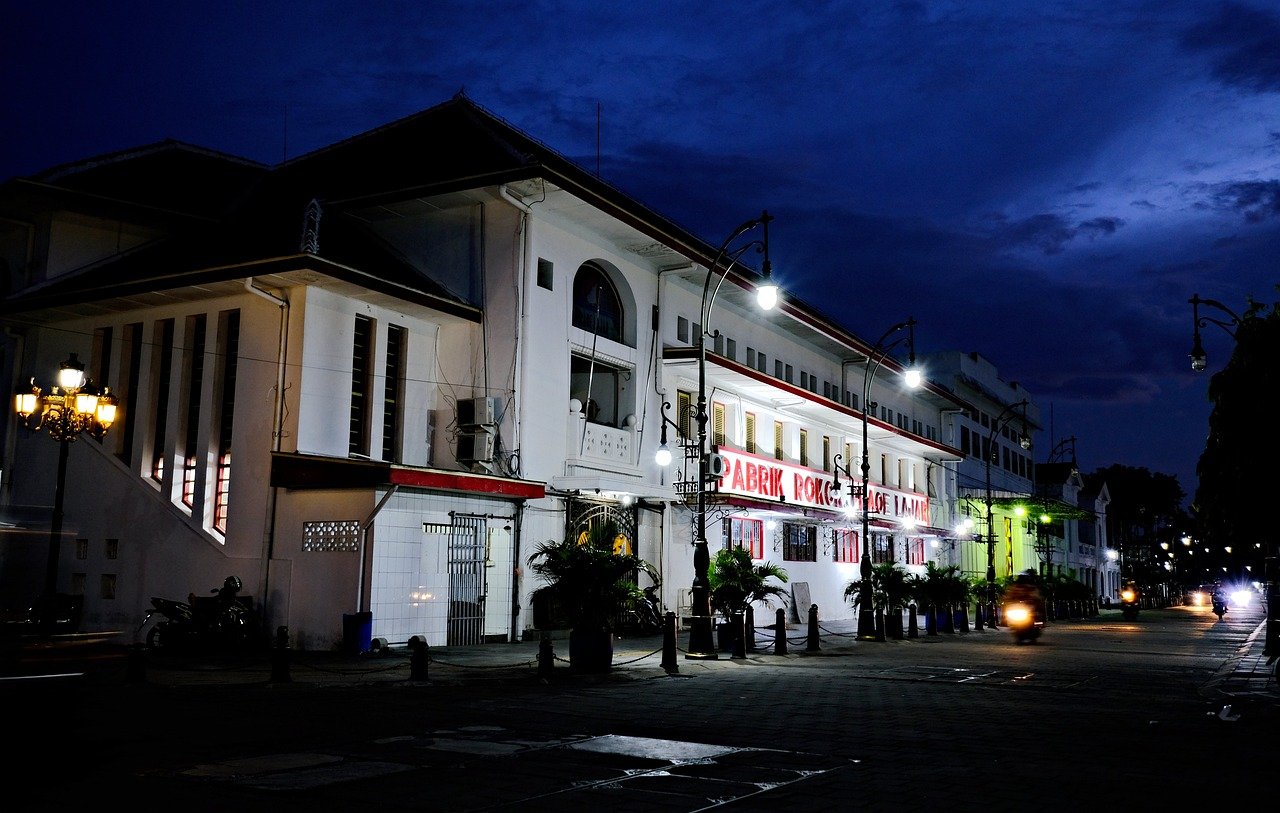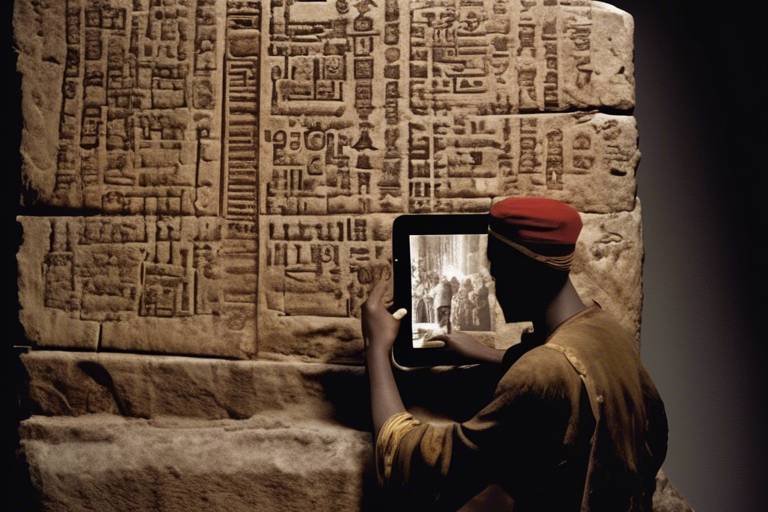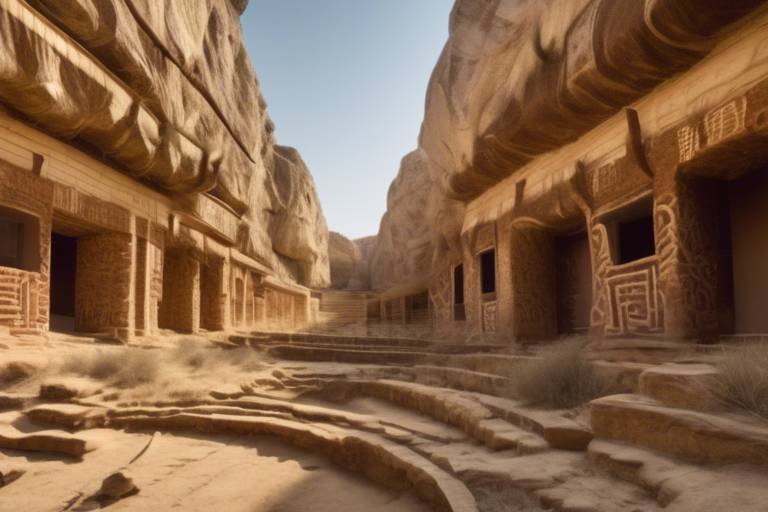The Impact of Tourism on Cultural Heritage Conservation
Tourism plays a significant role in both preserving and endangering cultural heritage sites worldwide. On one hand, it can provide vital economic resources to fund conservation efforts and support local communities. However, the influx of tourists can also pose serious threats to the integrity and longevity of these precious heritage sites.
When managed responsibly, tourism revenue can be a powerful tool for the conservation of cultural heritage. The income generated from entrance fees, guided tours, and souvenir sales can be reinvested into maintenance, restoration, and education programs aimed at safeguarding these sites for future generations.
Despite the positive economic impact, the surge in tourist numbers can lead to overcrowding and overuse of heritage sites, resulting in physical damage, erosion, and wear and tear. The concept of overtourism has become a growing concern, highlighting the delicate balance between promoting tourism and preserving the authenticity of these cultural treasures.
Local communities play a crucial role in the conservation of their cultural heritage, acting as stewards and advocates for the protection of these sites. By engaging with residents and empowering them to take ownership of their heritage, sustainable tourism practices can be implemented to ensure the long-term sustainability of these valuable assets.
Effective government policies and regulations are essential in managing the impact of tourism on cultural heritage conservation. By establishing guidelines for visitor behavior, zoning regulations, and carrying capacity limits, authorities can mitigate the negative effects of tourism while promoting responsible and respectful visitation.
Technological advancements have revolutionized the field of heritage conservation, offering innovative solutions for monitoring, preservation, and restoration efforts. From 3D scanning and virtual reality to drones and GIS mapping, technology has the potential to enhance the protection and interpretation of cultural heritage sites.

Positive Economic Impact
Tourism plays a significant role in contributing to the positive economic impact on cultural heritage conservation efforts worldwide. The revenue generated from tourism activities can be channeled towards funding conservation projects, restoration initiatives, and maintenance of heritage sites. This financial support not only aids in the preservation of cultural landmarks but also provides economic opportunities for local communities living in proximity to these sites.
By attracting tourists to heritage sites, local businesses such as hotels, restaurants, and souvenir shops can thrive, creating jobs and boosting the overall economy. Additionally, tourism revenue can be reinvested back into the community through infrastructure development, education programs, and cultural initiatives, further enhancing the socio-economic well-being of the region.
Moreover, tourism can help raise awareness about the importance of preserving cultural heritage among visitors, fostering a sense of appreciation and respect for these historical sites. This increased awareness can lead to greater support for conservation efforts and sustainable tourism practices, ensuring the long-term protection of cultural heritage for future generations to enjoy.

Negative Effects on Heritage Sites
Exploring how tourism can both benefit and harm cultural heritage conservation efforts around the world.
Discussing how tourism revenue can be used to fund conservation projects and support local communities.
Examining the potential damage caused by high tourist numbers on fragile heritage sites.
Overtourism Concerns
Highlighting the risks of overcrowding and overuse of cultural sites leading to degradation.
Exploring the role of local communities in preserving and protecting their cultural heritage in the face of tourism.
Sustainable Tourism Practices
Discussing strategies for promoting responsible tourism that minimizes negative impacts on cultural heritage.
Analyzing the importance of effective policies and regulations in balancing tourism development with heritage conservation.
Heritage Site Management
Exploring the challenges and best practices in managing tourism at heritage sites to ensure long-term preservation.
Highlighting how technological advancements can aid in the conservation and protection of cultural heritage sites.

Overtourism Concerns
Exploring how tourism can both benefit and harm cultural heritage conservation efforts around the world.
Discussing how tourism revenue can be used to fund conservation projects and support local communities.
Examining the potential damage caused by high tourist numbers on fragile heritage sites.
Overtourism has become a significant concern in many popular tourist destinations, posing serious threats to the preservation of cultural heritage sites. The sheer volume of visitors can lead to overcrowding, straining the infrastructure and environment of these delicate locations. The continuous influx of tourists can result in wear and tear on historical structures, accelerated erosion, and degradation of the surrounding landscapes. Balancing the desire to attract tourists with the need to protect these sites from overuse is a critical challenge faced by heritage conservationists.
Exploring the role of local communities in preserving and protecting their cultural heritage in the face of tourism.
Discussing strategies for promoting responsible tourism that minimizes negative impacts on cultural heritage.
Analyzing the importance of effective policies and regulations in balancing tourism development with heritage conservation.
Exploring the challenges and best practices in managing tourism at heritage sites to ensure long-term preservation.
Highlighting how technological advancements can aid in the conservation and protection of cultural heritage sites.

Community Involvement in Conservation
Community involvement plays a crucial role in the conservation of cultural heritage, as local residents are often the ones most deeply connected to these sites. Their active participation can lead to a sense of ownership and pride in preserving their heritage for future generations. By engaging with the community, conservation efforts can be more sustainable and effective.
One way to involve the community in conservation is through educational programs and workshops that raise awareness about the importance of cultural heritage. By providing information and resources, local residents can become advocates for preservation and take an active role in safeguarding their heritage.
Furthermore, community engagement can also extend to economic opportunities that benefit local residents. For example, supporting local artisans and businesses that produce traditional crafts or offer cultural experiences can help generate income within the community while promoting the value of heritage conservation.
Collaboration between local communities and conservation organizations is essential for developing conservation strategies that are culturally sensitive and sustainable. By working together, stakeholders can address challenges such as balancing tourism demands with heritage preservation and ensuring that conservation efforts benefit the community as a whole.

Sustainable Tourism Practices
When it comes to , the focus shifts towards ensuring that tourism activities do not harm the cultural heritage sites they aim to showcase and protect. It involves implementing strategies that promote responsible travel behavior and minimize negative impacts on the environment and local communities.
One key aspect of sustainable tourism is environmental conservation. This involves practices such as limiting carbon emissions, reducing waste generation, and preserving natural habitats surrounding heritage sites. By integrating eco-friendly initiatives into tourism operations, the long-term health of these sites can be safeguarded for future generations.
Another crucial element is community engagement. Sustainable tourism practices prioritize the involvement of local communities in decision-making processes and benefit-sharing mechanisms. By empowering residents to participate in conservation efforts and share in the economic benefits of tourism, a sense of ownership and pride in preserving their cultural heritage is fostered.
Educational programs play a significant role in promoting sustainable tourism. By raising awareness about the importance of cultural heritage conservation among visitors, tour operators, and local communities, a culture of respect and appreciation for these sites can be cultivated. This, in turn, leads to more responsible behavior and a deeper understanding of the value of preserving cultural heritage.
Furthermore, regulation and monitoring are essential components of sustainable tourism practices. Implementing guidelines and standards for visitor behavior, site management, and infrastructure development can help prevent overexploitation and degradation of heritage sites. Regular monitoring and enforcement of these regulations ensure compliance and accountability in the tourism industry.
Collaboration between stakeholders is key to the success of sustainable tourism practices. By fostering partnerships between government agencies, local communities, tour operators, and conservation organizations, a holistic approach to heritage site management can be achieved. This multi-stakeholder cooperation allows for the sharing of resources, expertise, and responsibilities in preserving cultural heritage for future generations.

Government Policies and Regulations
Government policies and regulations play a crucial role in balancing the development of tourism with the conservation of cultural heritage sites. These policies are essential in ensuring that tourism activities do not cause irreparable damage to the historical and cultural significance of these sites. By establishing clear guidelines and regulations, governments can effectively manage the influx of tourists while safeguarding the integrity of heritage sites.
One key aspect of government policies is the designation of protected areas and heritage sites, which helps in controlling the impact of tourism on these sensitive locations. Through zoning regulations and visitor management plans, authorities can limit the number of visitors allowed at a site at any given time, thus reducing the risk of overcrowding and overuse.
Additionally, governments can implement entry fees and permits for tourists visiting heritage sites, with the revenue generated being allocated towards conservation efforts and site maintenance. By leveraging tourism revenue in this manner, governments can ensure sustainable funding for the preservation of cultural heritage for future generations.
Moreover, effective government policies can also address issues such as infrastructure development around heritage sites, transportation management, waste disposal, and the enforcement of conservation laws. By enacting and enforcing these regulations, authorities can mitigate the negative impacts of tourism on cultural heritage and promote responsible visitation practices.
Collaboration between government agencies, local communities, conservation organizations, and tourism stakeholders is vital in the formulation and implementation of policies that strike a balance between tourism promotion and heritage preservation. By fostering partnerships and engaging in dialogue with all relevant parties, governments can create a framework that supports sustainable tourism practices and ensures the long-term conservation of cultural heritage sites.

Heritage Site Management
Heritage site management plays a crucial role in ensuring the long-term preservation and sustainability of cultural landmarks amidst the challenges posed by tourism. It involves a delicate balance between facilitating visitor access and protecting the integrity of the site. One key aspect of effective management is the implementation of visitor guidelines and regulations to prevent overcrowding and minimize environmental impact. By controlling visitor flow and behavior, heritage sites can be safeguarded from degradation and overuse.
Furthermore, heritage site managers must invest in infrastructure and facilities that can support sustainable tourism practices. This includes the development of visitor centers, interpretive signage, and guided tours to enhance the visitor experience while educating them about the significance of the site. By providing educational resources and engaging programming, managers can foster a deeper appreciation for the cultural heritage and encourage responsible behavior among tourists.
Collaboration with local communities is also essential in heritage site management. By involving community members in decision-making processes and conservation efforts, a sense of ownership and pride can be instilled, leading to greater protection of the site. Community engagement initiatives such as volunteer programs, cultural events, and traditional craft workshops can further strengthen the bond between residents and their heritage, ensuring its preservation for future generations.
Moreover, the integration of technology and innovation in heritage site management can revolutionize conservation efforts. Digital tools such as virtual reality tours, 3D scanning, and drone surveillance can aid in monitoring and documenting the condition of the site, identifying potential threats, and implementing proactive conservation measures. By harnessing the power of technology, heritage site managers can enhance their ability to preserve cultural treasures and mitigate risks associated with tourism.

Technology and Innovation in Conservation
Exploring how tourism can both benefit and harm cultural heritage conservation efforts around the world.
Discussing how tourism revenue can be used to fund conservation projects and support local communities.
Examining the potential damage caused by high tourist numbers on fragile heritage sites.
Highlighting the risks of overcrowding and overuse of cultural sites leading to degradation.
Exploring the role of local communities in preserving and protecting their cultural heritage in the face of tourism.
Discussing strategies for promoting responsible tourism that minimizes negative impacts on cultural heritage.
Analyzing the importance of effective policies and regulations in balancing tourism development with heritage conservation.
Exploring the challenges and best practices in managing tourism at heritage sites to ensure long-term preservation.
Highlighting how technological advancements can aid in the conservation and protection of cultural heritage sites.
Frequently Asked Questions
- How can tourism benefit cultural heritage conservation efforts?
Tourism can provide essential funding for conservation projects and support local communities by generating revenue that can be reinvested in preserving cultural sites.
- What are the negative effects of high tourist numbers on heritage sites?
High tourist numbers can lead to overcrowding, overuse, and physical degradation of cultural sites, posing risks to their long-term preservation.
- How can local communities contribute to heritage conservation in the face of tourism?
Local communities play a crucial role in protecting their cultural heritage by actively participating in conservation efforts, promoting sustainable tourism practices, and preserving their traditions.
- Why are government policies and regulations important for balancing tourism and heritage conservation?
Effective policies and regulations help manage tourism development, minimize negative impacts on heritage sites, and ensure the sustainable preservation of cultural heritage for future generations.
- How can technology and innovation aid in the conservation of cultural heritage sites?
Technological advancements such as digital mapping, 3D scanning, and monitoring systems can enhance conservation efforts, improve site management, and facilitate the protection of cultural heritage from threats.



















